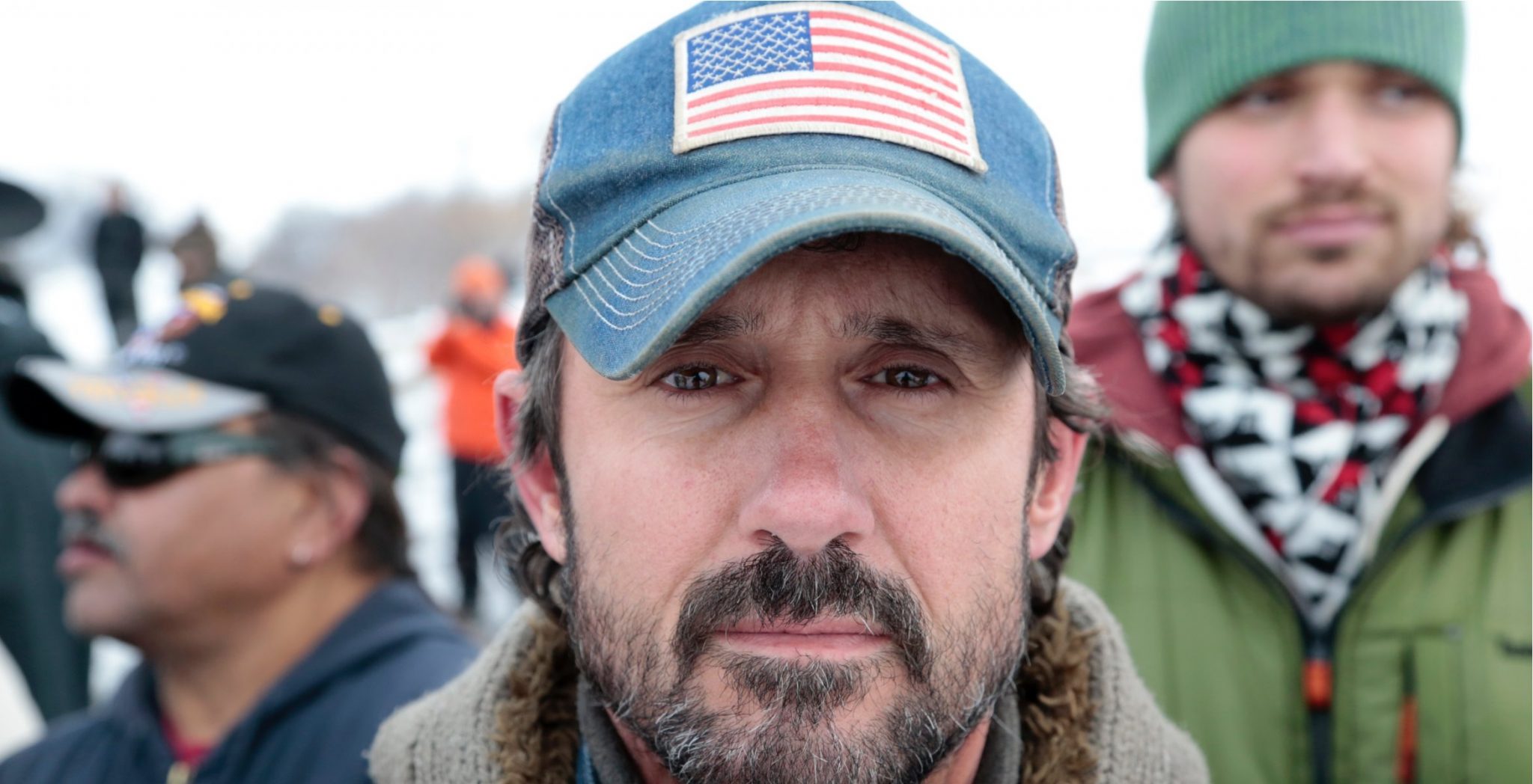February 6th, 2017
By Carey Wedler
In early December, many Americans celebrated the Army Corps of Engineers decision to withhold a final permit for the Dakota Access Pipeline (DAPL), a project that drew ongoing demonstrations from native Standing Rock Sioux “water protectors,” environmentalists, and other activists. The Corps decision effectively halted construction, at least temporarily, until an environmental impact assessment could be conducted, and coincided with the arrival of thousands of U.S. military veterans to the camp. They had vowed to defend protesters from heavily militarized and aggressive police, as well as to prevent construction on the pipeline itself.
Though the saga appeared to end there — and media coverage of the situation tapered off — recent developments have triggered further conflict.
Before his inauguration, President Donald Trump was expected to push the DAPL through, and he quickly made good on that assumption upon taking office. Trump issued executive orders to authorize construction on both DAPL and the highly controversial Keystone XL pipeline. Trump ordered the Army Corps of Engineer to “review and approve [the project] in an expedited manner,” also asking the Army to consider “whether to ‘withdraw’ the environmental review, despite the fact it is already under way, with a public comment period that closes on 20 February,” The Guardian reported last week.
[pro_ad_display_adzone id=”110028″]
This move is unsurprising considering Trump previously held stock in Energy Transfer Partners (ETP), the company behind DAPL, while former Texas Governor Rick Perry, Trump’s pick for Secretary of Energy, is on the board of ETP. Further, Trump has shown his apparent acceptance of oil dependency by his appointment of former Exxon CEO Rex Tillerson to the role of Secretary of State.
According to North Dakota Senator John Hoeven, the pipeline “is in the final process of getting approvals to complete construction across the Missouri river,” though the easement to continue the project has not yet been granted, The Guardian reported.
The Standing Rock Sioux tribe’s legal counsel has vowed to continue fighting. Even so, tribal leadership has ordered the remaining camps to be cleared out due to flood risks, reports journalist Derrick Broze for Activist Post:
“Still, water protectors, as the pipeline opponents prefer to be called, worry that the shutting down of the camps is part of a larger push towards friendly relations with the oil industry under the newly inaugurated President Trump. The camps have been plagued with violence from police as they attempt to stop the construction of the controversial DAPL.”
Heavily armed police arrested 76 individuals on Wednesday, February 1st, and the Sacred Stone Camp posted a video of the police presence, noting there were “humvees, armored vehicles, and lots of personnel.” As Activist Post reported, “police with the Morton County Sheriff’s office and surrounding counties entered the north entrance of the Oceti Sakowin camp, north of the Cannonball River.”
“A lot of water protectors really felt that we needed to make some sort of stand as far as treaty rights,” said Linda Black Elk, a member of the Catawba Nation, as cited by The Guardian. “We basically started to see police mobilizing from all directions. Someone came along and told us we had about 15 minutes before the camp would get raided.”
On Thursday, activist and live-streamer Johnny Dangers posted video footage documenting the police presence, noting “BIA, ATF, US Army Core, Fish and Wild Life, [and] Tribal police” had entered the prayer camp. The BIA (Bureau of Indian Affairs) reportedly entered the camp to check for flooding while militarized police asserted they had authority to conduct the raid.
In light of these ongoing developments, U.S. veterans are again mobilizing to defend water protectors on the ground. According to Anthony Diggs, a spokesman for Veterans Stand, the veterans’ movement that supported the camp in December:
“We are committed to the people of Standing Rock, we are committed to nonviolence, and we will do everything within our power to ensure that the environment and human life are respected. That pipeline will not get completed. Not on our watch.”
Further, according to the Veterans Stand website:
“In the past two weeks the turmoil and uncertainty at #StandingRock has increased significantly. We have continued to stay in contact with indigenous and camp leadership and have identified several areas where the Veterans Stand network can continue to serve the needs of the local community.”
The group crowdfunded hundreds of thousands of dollars in December and has raised an additional $75,000 since announcing their plans to continue their mission. They hope to gather enough funds “to have a larger, solid boots-on-the-ground presence,” as well as to ensure “basic transport of supplies and personnel,” CNBC reports. According to the group’s website, funds will also go toward fortification against sub-zero winter temperatures.
You can support their fundraiser here.
It is currently unclear when Veterans Stand plans to return en masse to North Dakota or how many will attend. “We still have people on the ground out there, but we want to make sure we’re going out there in service,” Diggs said, expressing optimism they could again see huge swells of veteran support. “The 4,000 could have easily turned into 20,000, because that’s how we’re trained to operate,” he said of December’s operation.
Regardless, the veterans have asserted their ongoing commitment to the cause. As battles continue both in court and on the ground, the reemergence of veterans into the equation is likely to add credence and material support to the opposition, just as it did in December. As Anthony Diggs explains, the presence of veterans among protesters would be a public relations disaster for government and local authorities “if they had veterans standing in solidarity in peaceful protest being fired upon with rubber bullets on live TV.”
He continues:
“Our veterans have stepped up and chosen to serve because there are still human and constitutional rights being violated. We are honored to serve beside them.”
This article first appeared on theAntiMedia.org.
[pro_ad_display_adzone id=”110027″]









